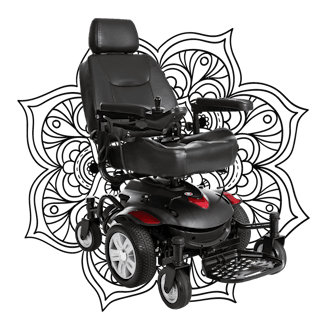WheelchairsMobility Devices
Mobility Devices
Medicare covers a wide range of mobility equipment, including manual and power wheelchairs, scooters, canes and walkers, as durable medical equipment. Contact us if your health care provider deems it medically necessary and prescribes the equipment for use in your home
Medicare Cover Wheelchairs
Medicare may pay only for you to rent a wheelchair — not buy one — because a wheelchair is a more expensive and substantial purchase than other common equipment. Medicare typically requires beneficiaries to rent and not purchase items that are considered DME.
But any repairs or replacement parts that you may need will be covered by Medicare only if you own the equipment, while costs for rented items will fall to the supplier. Medicare often pays for equipment like wheelchairs to be rented for up to 13 months.
If you are prescribed a wheelchair to use in your home, you may want to look into various home modifications that can prevent falls and accidents. Past studies have shown that these modifications lead to fewer injuries among wheelchair users.
Power Scooters Are Covered By Medicare
Scooters are covered as DME if they are prescribed for use in your home by a doctor. Medicare will also help pay for a power wheelchair if it is deemed medically necessary and you meet certain conditions.
A power wheelchair is essentially an electric wheelchair and is meant for people who don’t have the strength or mobility to safely use a manual wheelchair or steer a scooter. In addition to a written prescription, you also have to go through a face-to-face examination before Medicare will help pay for a power wheelchair.
Medicare Coverage of Walkers and Canes
Medicare Part B covers canes as DME. This coverage does not include white canes for the blind. Your mobility must be significantly limited and affect you at home for Medicare to help pay for a cane.
Walkers and rollators are also covered, but only if they are deemed medically necessary. Your health care provider must prescribe the walker or rollator for use in your home for Medicare to cover it.
Unlike with wheelchairs, Medicare will likely help pay for you to buy canes and walkers instead of rent them. Medicare will cover 80 percent of the cost, and you will be responsible for the remaining 20 percent once you have paid your deductible. These items are covered only if your doctor and supplier are both enrolled in Medicare.

Powered Mobility Devices
Group 1 POVs / Scooters
These 3 or 4 wheeled devices offer a user basic motorized mobility but with very limited features and customization – one size fits all. To qualify for a Group 1 device, an individual must be able to transfer on and off the unit. Their arm strength, mobility and coordination must be sufficient to control the tiller style control and trunk stability must be ample to sit without any type of external support. The longer wheel base of scooters necessitates a greater turning radius and thus more room is required for maneuverability (versus the devices described below). This can make their use in the home (particularly the bathroom) challenging.
Group 2 PWCs
Group 2 PWCs offer improved mobility assistance over Group 1 POV’s in addition to a host of other potentially necessary features. These include rehab style seating (custom seat and back cushions) versus a simple captain’s style seat; power seat functions (described below) to help with positioning and expanded usability; access to alternative controllers / joysticks; and the ability to mount a ventilator. Qualifying for a Group 2 device would be based upon meeting the basic requirements for a PMD and a demonstration that a Group 1 device would be insufficient.
Group 3 PWCs
Group 3 PWCs also offer improved mobility assistance but with attention to the specific needs of their full time users. Group 3 PWCs are intended for individuals living with more complex physical needs secondary to neurological, myopathic or congenital skeletal deformities. Examples include ALS, cerebral palsy, stroke, multiple sclerosis, spinal cord injury, muscular dystrophy, polio, spina bifida. In addition to the features available with Group 2 PWCs, Group 3 PWC’s offer access to upgraded drive control systems for individuals not able to use their hand for traditional joystick use; their suspension systems are designed to reduce vibration; their daily range of use (distance) is almost double that of a Group 2 PWC; they can climb over greater height obstacles / thresholds; and they offer improved stability to the user with traversing inclines and declines. All important features for full time users, with greater physical challenges, engaged in community based activities. Qualifying for a Group 3 device would be based upon meeting the basic requirements for a PMD and a demonstration that a Group 2 device would be insufficient.
Power Seat Functions & Coverage Criteria
Power seat functions are designed for user operation thru the PMD’s drive control interface (joystick).
Tilt – the entire seat assembly tilts rearward up to 50 degrees. To qualify, the client is deemed at high risk for development of a deep pressure injury and is unable to effectively reposition themselves for pressure redistribution. The client may also require power tilt to manage increased muscle tone or spasticity.
Recline – the seat’s backrest opens rearward in isolation from the seat cushion. To qualify, the client utilizes intermittent catheterization for bladder management and is unable to independently transfer themselves from their PWC to bed. The client may also require power tilt to manage increased muscle tone or spasticity.
Seat elevation – the entire seat assembly raises vertically up to 10 inches. Although not covered by Medicare; other insurers will consider the expense. The primary successful criteria for coverage centers around improving the performance and safety of surface to surface transfers by creating “downhill” direction or functional standing position.
Elevating leg rests – the leg rest assembly can be raised and lowered independently of the other power seat functions. To qualify, the client must have a musculoskeletal condition which prevents flexion of their knee joints to 90° OR meets the criteria for a power reclining back system OR has significant lower extremity edema.
- Significantly struggle to move around your home
- Can’t safely use a cane or walker
- Can’t safely use a wheelchair
- Don’t have the strength to operate or steer a scooter
- Go through a face-to-face exam with your doctor
- Can safely use the power wheelchair in your home
Medicare will cover 80 percent of the cost of a scooter or power wheelchair.
You will owe 20 percent after you have paid your deductible. Your doctor and supplier must both be enrolled in Medicare. Scooters and power wheelchairs are not covered if you need them only for use outside of your home.
Need Supplies?, Have a Prescription?
Contact Us
Call US
919-522-5221Call Us
919-522-5221
Fax
919-874-5123Fax
919-874-5123
CREDIT: Simmons, Christian. “Does Medicare Cover Mobility Equipment?” RetireGuide.com, 20 May 2022, https://www.retireguide.com/medicare/services/durable-medical-equipment/mobility-equipment/.


